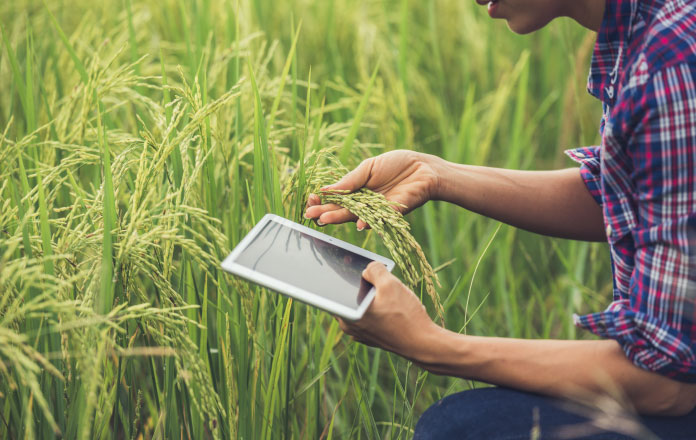Agriculture, one of the oldest and most important sectors, is undergoing a paradigm shift driven by data and sophisticated technologies. This evolution packs a punch for small farmers, who make up a big chunk of global food growers. These farmers can enhance crop yields, save resources, and roll with the climate punches thanks to the tools and know-how that smart farming offers. This technology transformation is impacting smallholder farmers and helping them step up their game in a big way.
Impact of Data on Today’s Farming:
Farmers are leveraging tech-powered farming, also called precision agriculture, to keep an eye on and take care of their crops and livestock. This way of doing things gets information from soil sensors, weather stations, drones, and satellite imagery. Researchers then analyze the collected data to give farmers helpful advice for making informed decisions.
Enhancing Productivity:
Data-driven farming has a big impact on making farms more productive. Farmers can figure out the best times to plant, water, and add fertilizer by using data analysis. Moisture sensors in the soil give real-time information to help farmers decide when to water crops and how much, so plants get the right amount of water when needed. In the same way, information about what’s in the soil tells farmers exactly where to put fertilizer, which cuts down on waste and helps grow more crops.
Optimizing the Use of Resources:
Another advantage of using data on farms is that it helps small farmers get more bang for their buck with their water, seeds, fertilizers, and bug killers. This cuts costs and boosts crop yields. Take smart watering systems, for example. They pump water to the right spots at the right moments based on dirt moisture readings and weather forecasts. This saves water and stops plants from drowning, which can rot their roots. Additionally, clever planting gadgets put seeds in the ground at just the right spacing and depth. This means more seeds sprout and fewer go to waste.
Increasing Resilience to Climate Change:
Climate change poses a major risk to farming for small-scale farmers, who often bear the brunt of its impact. Farming based on data gives farmers the tools to adapt to changing weather. Weather stations and forecast models provide accurate and timely weather information, letting farmers plan and adjust their work as needed. This matters in places with harsh weather, like when it’s super dry or too much rain. Data analysis can boost farming practices that stand up to climate change. For instance, looking at past weather and how crops behaved can show which plants can handle the tough weather in an area. This information helps pick better crops that can survive rough climate shifts, ensuring there’s more food and farmers can protect what they earn.
Challenges and the Way Forward
Even with all the good information, small farmers still face problems. They don’t always know how to use new technology; it costs a lot, and they can’t always get on the internet. To help them, the government, charities, and businesses need to work together. Also, for more farmers to use these new tools, they must be cheap and easy to use, fitting what each farmer needs. Money isn’t as big a problem now because of grants and other help, and farmers are learning how to use the technology through training programs.
Small farmers can gain from using data in farming. Smart farming helps make things sustainable and profitable by growing more food, using resources better, and dealing with climate change. So, smallholder farmers must be provided with the information and tools to keep their jobs safe and feed more people globally as new technology keeps changing.




